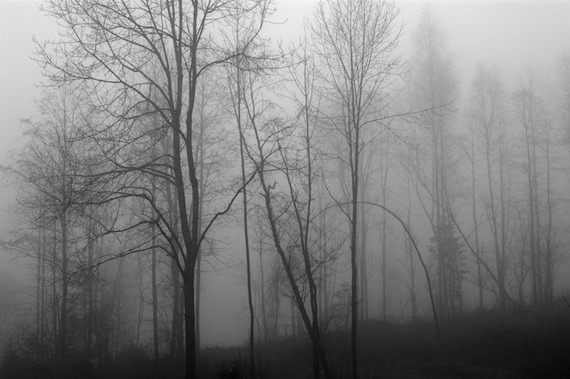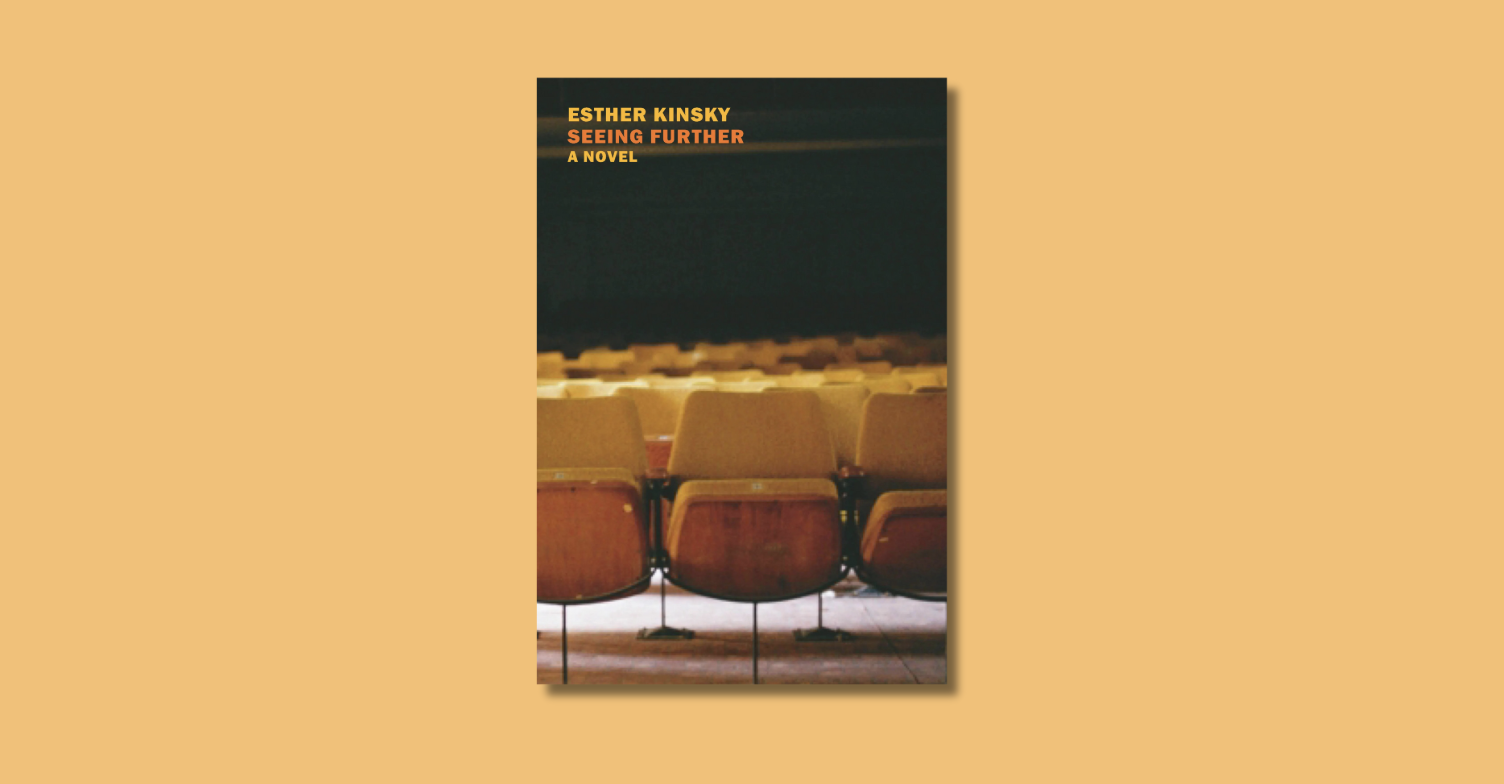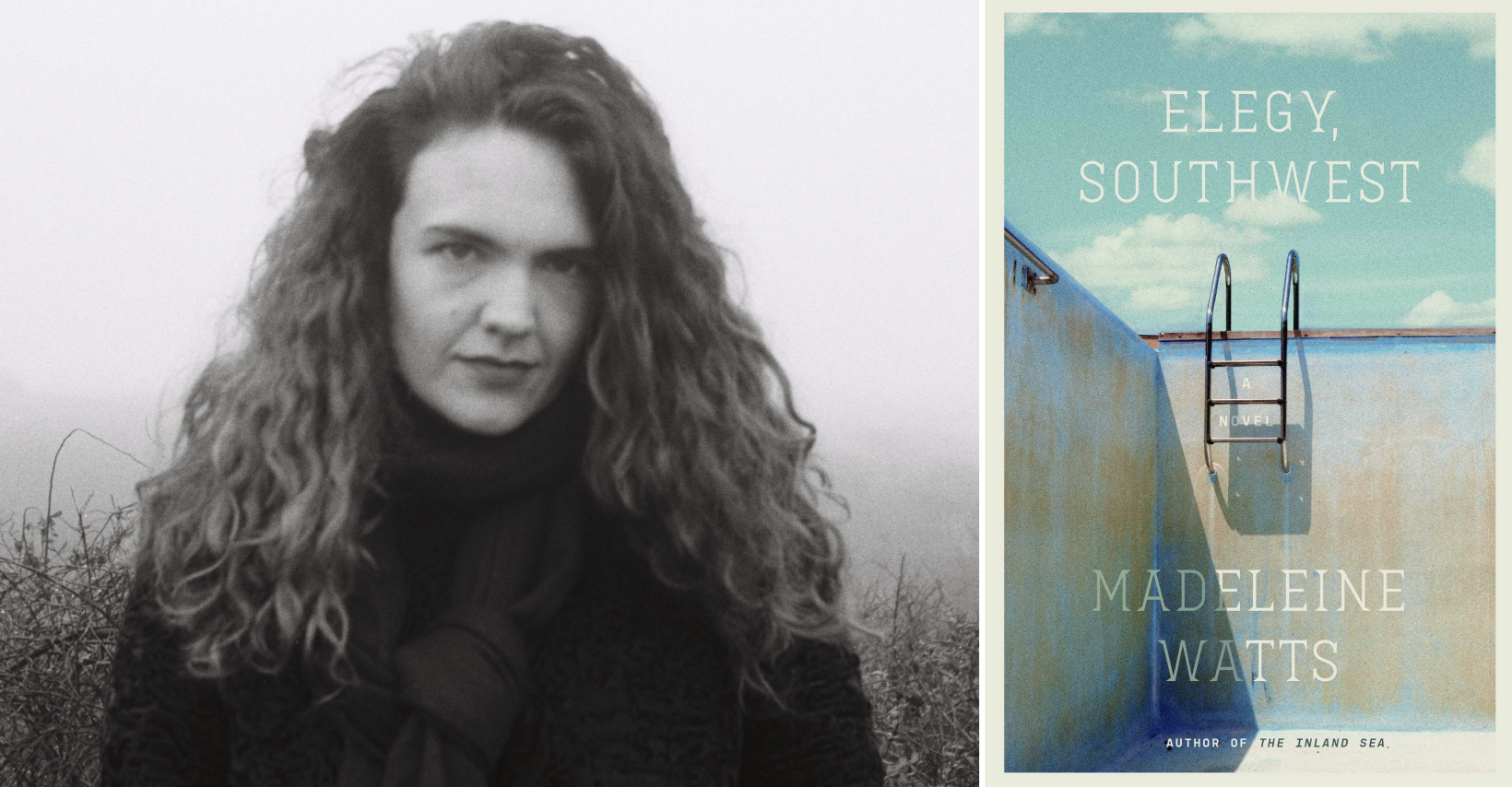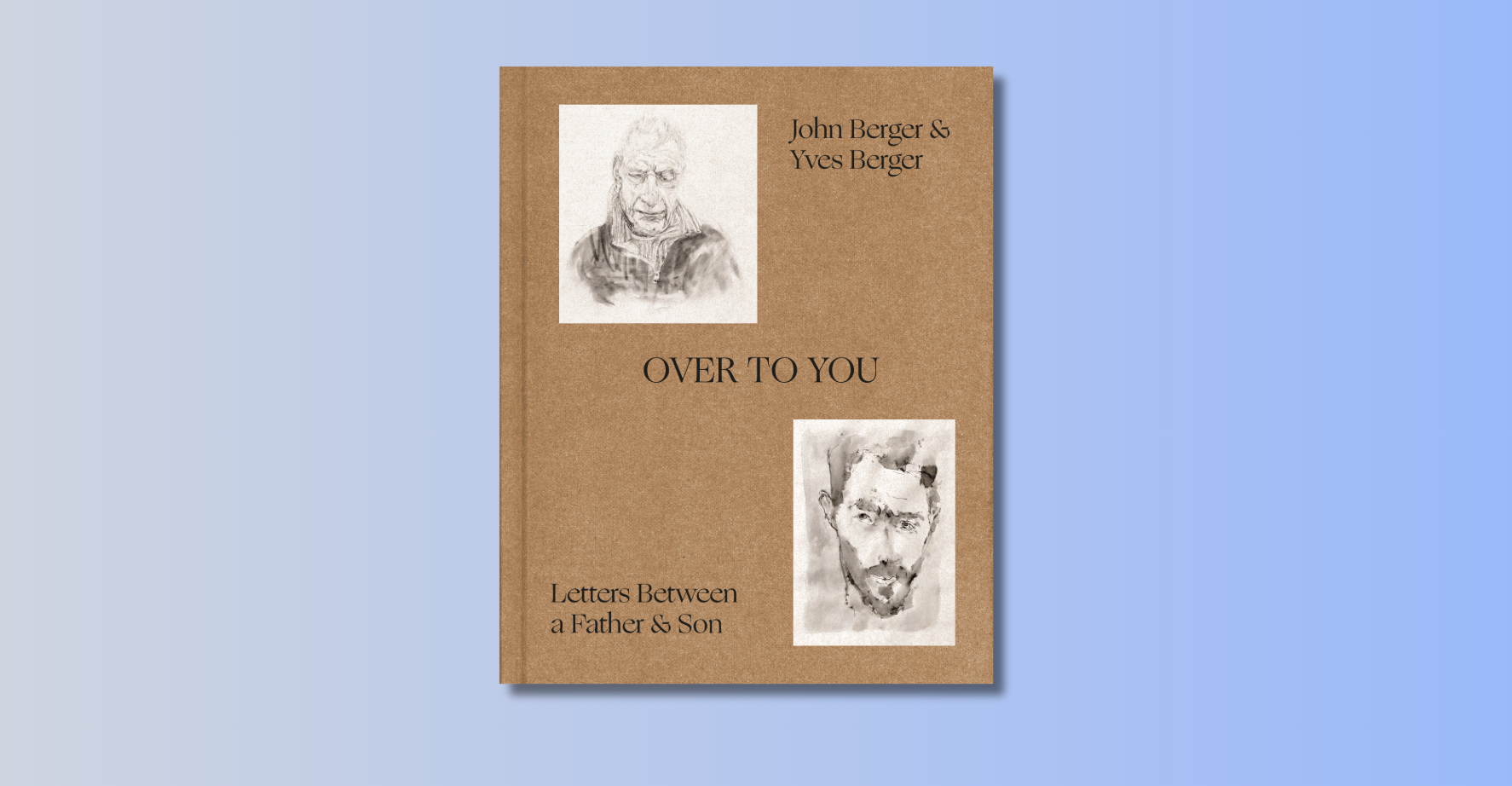
Tom Nissley’s column A Reader’s Book of Days is adapted from his book of the same name.
November is the anti-April: gray and dreary, the beginning of the end of things rather than their rebirth. It’s the month you hunker down — if you don’t give up entirely. When Ishmael leaves Manhattan for New Bedford and the sea in Moby-Dick, it may be December on the calendar, but he’s driven to flee to the openness of oceans by “a damp, drizzly November in my soul.” And where else could Dickens’s Bleak House begin but, bleakly, in “implacable November,” with dogs and horses mired in mud, pedestrians “jostling one another’s umbrellas in a general infection of ill temper” (not unlike Ishmael “deliberately stepping into the street, and methodically knocking people’s hats off”), and of course, the Dickens fog:
Fog everywhere. Fog up the river, where it flows among green aits and meadows; fog down the river, where it rolls defiled among the tiers of shipping and the waterside pollutions of a great (and dirty) city. Fog on the Essex marshes, fog on the Kentish heights. Fog creeping into the cabooses of collier-brigs; fog lying out on the yards and hovering in the rigging of great ships; fog drooping on the gunwales of barges and small boats.

 Shall I go on? Jane Eyre begins on a “drear November day,” with a “pale blank of mist and cloud” and “ceaseless rain sweeping away wildly before a long and lamentable blast.” And it’s on a “dreary night in November,” as “rain pattered dismally against the panes,” that Victor Frankenstein, blindly engrossed in his profane labors as the seasons have passed by outside, first sees the spark of life in the watery eyes of his creation. Is it any wonder that Meg in Little Women thinks that “November is the most disagreeable month in the whole year”?
Shall I go on? Jane Eyre begins on a “drear November day,” with a “pale blank of mist and cloud” and “ceaseless rain sweeping away wildly before a long and lamentable blast.” And it’s on a “dreary night in November,” as “rain pattered dismally against the panes,” that Victor Frankenstein, blindly engrossed in his profane labors as the seasons have passed by outside, first sees the spark of life in the watery eyes of his creation. Is it any wonder that Meg in Little Women thinks that “November is the most disagreeable month in the whole year”?
 Not everyone agrees that it’s disagreeable. In his Sand County Almanac, Aldo Leopold, who finds value in each of the seasons, calls November “the month for the axe” because, in Wisconsin at least, it’s “warm enough to grind an axe without freezing, but cold enough to fell a tree in comfort.” With the hardwoods having lost their leaves, he can see the year’s growth for the first time: “Without this clear view of treetops, one cannot be sure which tree, if any, needs felling for the good of the land.” The season’s first starkness, in other words, brings clarity to the work of the conservationist, whose labors in managing his forest are done with axe not pen, “humbly aware that with each stroke he is writing his signature on the face of his land.”
Not everyone agrees that it’s disagreeable. In his Sand County Almanac, Aldo Leopold, who finds value in each of the seasons, calls November “the month for the axe” because, in Wisconsin at least, it’s “warm enough to grind an axe without freezing, but cold enough to fell a tree in comfort.” With the hardwoods having lost their leaves, he can see the year’s growth for the first time: “Without this clear view of treetops, one cannot be sure which tree, if any, needs felling for the good of the land.” The season’s first starkness, in other words, brings clarity to the work of the conservationist, whose labors in managing his forest are done with axe not pen, “humbly aware that with each stroke he is writing his signature on the face of his land.”
But really, why go out in the fog and drear at all? Stay inside and read.
 Pride and Prejudice by Jane Austen (1813)
Pride and Prejudice by Jane Austen (1813)
What is romance without obstacles, which are planted in Elizabeth Bennet’s path most enjoyably at November’s Netherfield ball, including an unwanted proposal from Mr. Collins and a further contempt for the perfidious Mr. Darcy.
Frankenstein by Mary Shelley (1818)
The horrified, fascinated romance between creator and created begins with an electric spark in the gloom of November and ends on the September ice of the Arctic, with the monster, having outlived the man who called him into being, heading out to perish in the darkness.
 Woman in the Nineteenth Century by Margaret Fuller (1845)
Woman in the Nineteenth Century by Margaret Fuller (1845)
In November 1839, 25 women assembled in a Boston apartment for the first “Conversation,” a salon hosted by Margaret Fuller, a formidable intellect still in her 20s. She’d later be accused, after her early death, of having been a talker rather than a doer, but her friend Thoreau praised this major work for that very quality: it reads as if she were “talking with pen in hand.”
Bleak House by Charles Dickens (1853)
Not quite as muddy and befogged as the November afternoon on which it begins — nor as interminable as the legal case, Jarndyce v. Jarndyce, in which its story is enmeshed — Bleak House is actually one of Dickens’s sharpest and best-constructed tales.
 The Return of the Native by Thomas Hardy (1878)
The Return of the Native by Thomas Hardy (1878)
The restless desire of Hardy’s doomed characters, especially the bewitching “Queen of the Night,” Eustacia Vye, is fanned, at the novel’s beginning and its tragic end, by the pagan flames of November 5th’s Bonfire Night.
Quicksand by Nella Larsen (1928)
It’s on a rainy November day in New York that Helga Crane, after a life on the move from the South to Chicago to Harlem to Denmark and back to Harlem again, steps into a storefront church and — either lost or saved, she doesn’t know — makes a choice that mires her into a life from which there’s no escape.
 Pippi Longstocking by Astrid Lindgren (1945)
Pippi Longstocking by Astrid Lindgren (1945)
Fed up with November? Why not celebrate it the way, according to Pippi, they do in Argentina, where Christmas vacation begins on November 11, ten days after the end of summer vacation?
Under the Volcano by Malcolm Lowry (1947)
The descent toward death of the alcoholic consul, Geoffrey Firmin, takes place entirely on the Day of the Dead in 1938, the same day Lowry later liked to say he had his first taste of mescal.
 To Kill a Mockingbird by Harper Lee (1960)
To Kill a Mockingbird by Harper Lee (1960)
“Mr. Ewell,” asks the prosecutor, “would you tell us in your own words what happened on the evening of November twenty-first, please?” Those disputed events are what the jury — “twelve reasonable men in everyday life” — is presumed by law to be able to determine, with the guidance of the prosecutor and the defense attorney, Atticus Finch.
“Frank Sinatra Has a Cold” by Gay Talese (1966)
A few fall months spent in the orbit of Mr. Sinatra, but none in conversation with the man himself, were enough for Talese to put together this revolutionary, and still fresh, celebrity profile — and profile of celebrity — for Esquire.
 The Friends of Eddie Coyle by George V. Higgins (1970)
The Friends of Eddie Coyle by George V. Higgins (1970)
Eddie Coyle was caught driving a truck through New Hampshire with about 200 cases of Canadian Club that didn’t belong to him, and now he has a court date set for January. So he spends the fall trying to make a deal — trying to make a number of deals, in fact — in Higgins’s debut, which Elmore Leonard has, correctly, called “the best crime novel ever written.”
The Death of Jim Loney by James Welch (1979)
The fall is indeed bleak in the Montana of Welch’s second novel, in which Loney, a young man with a white father and an Indian mother — both lost to him — stumbles toward his fate like Ivan Ilych, unsure of what it means to live.
 The Ice Storm by Rick Moody (1994)
The Ice Storm by Rick Moody (1994)
Thanksgiving and family dysfunction go together like turkey and gravy, but Moody deftly sidesteps the usual holiday plot in his Watergate-era tale of suburbanites unmoored by affluence and moral rot by setting his domestic implosion on the day and night after Thanksgiving, as an early-winter storm seals Connecticut in ice.
Libra by Don DeLillo (1988) and American Tabloid by James Ellroy (1995)
The Dallas motorcade was a magnet for plotters in 1963, and it has been ever since, especially in these two modern masterpieces in which too many people want the president dead for it not to happen.
 A Century of November by W.D. Wetherell (2004)
A Century of November by W.D. Wetherell (2004)
November 1918 may have meant the end of the Great War, but for Charles Marden, who lost his wife to the flu and his son to the trenches, it means a pilgrimage, driven by unspoken despair, from his orchard on Vancouver Island to the muddy field in Belgium where his son died, an expanse still blanketed with barbed wire and mustard-gas mist that seem to carry another hundred years’ worth of war in them.
Image Credit: Wikimedia Commons








